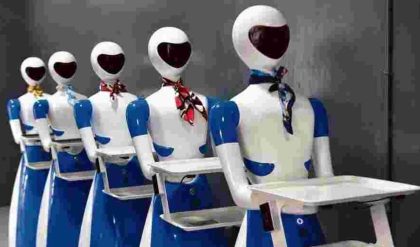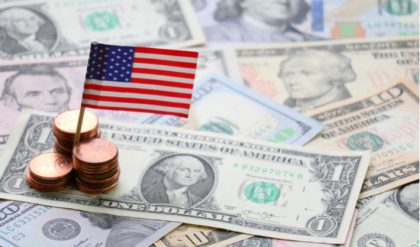For many years, “modern monetary theory” advocates have been a merry band of contrarians. If they taught a course, it might be called Everything You Know About Macroeconomics Is Wrong.
They hold that a government able to borrow in its own currency need not be constrained by budget deficits and debt — meaning that it can act more boldly than economists have assumed, without negative consequences.
Something has changed recently. The M.M.T. crowd is being taken a lot more seriously.
Ideas rooted in this approach show up in the Green New Deal and other initiatives of the left wing of the Democratic Party. And these ideas are increasingly being wrestled with — though skeptically — by leading center-left economic policy thinkers.
Most prominent among the latter group, the Nobel laureate and Times columnist Paul Krugman and the former Treasury secretary Larry Summers have written disdainfully about modern monetary theory in recent weeks, even as they accept some of its arguments and in practical terms have similar preferences for economic policy in the near term.
Stephanie Kelton, a leading advocate of the theory, is, as you might expect, not having it.
This debate so far has featured plenty of abstract macroeconomic theory, but also dueling rhetorical styles and no small amount of insider vs. outsider dynamics. M.M.T. people are the insurgents who view their antagonists as a calcified elite, and that establishment views the M.M.T. people as gooey idealists. Ms. Kelton and other adherents of the theory are seemingly on a journey from outsider to insider.
But for all the digital ink spilled on this topic in recent weeks on the pure economics of the theory, there has been surprisingly little discussion of the practical implications for how economic policy would work.
For example, a core idea behind the theory is that Congress should spend money as it sees fit, and that its only constraints should involve the available real-world resources of labor and materials to carry out those spending ambitions. In this model, inflation is the sign that spending needs to be reined in or taxes raised.
But it might be too much to expect Congress to move with foresight and wisdom in applying the brakes at the right time. Elected officials have tended to have exactly the opposite instincts of M.M.T advocates. In 2011, Congress demanded deficit reduction at a time of deflation risks and weak growth. In 1981, the Reagan administration and Congress enacted tax cuts and military spending increases at a time of double-digit inflation.
It’s fine to criticize the performance of the Federal Reserve — the institution with primary responsibility for stabilizing the economy under the current economic system — for bad decisions over the years. But anyone who has watched the sometimes off-the-wall questions at congressional oversight hearings of the Fed over the last decade would be unlikely to conclude that the lawmakers have a better understanding of economic policy.
Moreover, the ability of a country to borrow money in its own currency isn’t a permanent state of affairs. It’s a credibility that a country can gain and lose, as countless nations have over the centuries. The conventional view is that you attain that ability over time through low inflation, an independent central bank, a strong legal system and good governance. How would the United States’ credibility along those lines fare in an M.M.T. world?
A country that prints its own money has no need to default on its debt. But history offers many examples of the result of using money printing as a solution for a lack of private buyers for debt: a vicious cycle of rising inflation.
The M.M.T. crowd will surely be prepared to explain why its approach wouldn’t end in catastrophe, but there is a broader point. What’s being proposed is a fundamental reordering of how economic institutions and priorities work. It would be nice to have some proof of concept before it is put in place in the largest economy in the world — also home to the world’s reserve currency.
It would be genuinely fascinating to watch a small country — with its own currency — govern itself according to the theory’s principles. Here are some possibilities: New Zealand, Norway, Switzerland, Sweden, Israel, Singapore.
If those smaller countries can work out the kinks of economic governance in an M.M.T. world, and achieve a higher standard of living, maybe then scale it up to a midsize country? We’re looking at you, Australia, Canada, Britain and South Korea.
If mainstream critics of M.M.T. turn out to be misguided, they will have egg on their face, and the conventional wisdom will surely shift. Indeed, an intellectual shift on how much to worry about budget deficits is already well underway.
There’s a bit of a parallel with another innovation in economic policy of the last generation: the setting of a numerical target for inflation, typically 2 percent. New Zealand did it first, in 1989. As it proved helpful in steadying inflation, a series of increasingly large countries embraced it. The United States did not formally do so until 2012.
There’s nothing wrong with challenging the received wisdom, and modern monetary theory does identify flaws in how mainstream policymakers have viewed the world. It really is the case, for example, that a country like the United States — which borrows in its own currency — isn’t vulnerable to the kind of fiscal crisis Greece experienced starting in 2010, contrary to the warnings of American deficit hawks.
But the livelihoods of billions of people worldwide depend on the idea that the United States — with its centrality to the global economy and financial system — won’t botch things.
Maybe macroeconomic governance should have its own form of medical oath: First, do no harm.






Comments are closed.